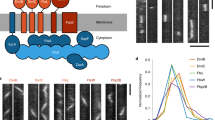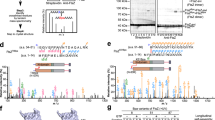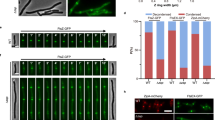Abstract
Critical concentration gradient model is helpful in understanding the mechanism of Z-ring formation. The distribution of positive and negative regulators of Z-ring formation in cell is not random but well programmed. The positive and negative regulators in cell lead to a critical concentration gradient from mid cell to the poles. The critical concentration of FtsZ required for Z-ring assembly at the centre of cell is less than that at the poles. So FtsZ starts polymerizing at cell centre and afterwards by cooperative association of more and more monomers leads to the Z-ring formation. Simultaneously during Z-ring formation the recruitment of other accessory proteins takes place, leading to the formation of a stable divisome complex.
Similar content being viewed by others
Article PDF
Author information
Authors and Affiliations
Corresponding author
Rights and permissions
About this article
Cite this article
Rashid, A., Sing, P. Critical Concentration Gradient Model of Bacterial Cell Division. Nat Prec (2010). https://doi.org/10.1038/npre.2010.4659.1
Received:
Accepted:
Published:
DOI: https://doi.org/10.1038/npre.2010.4659.1



